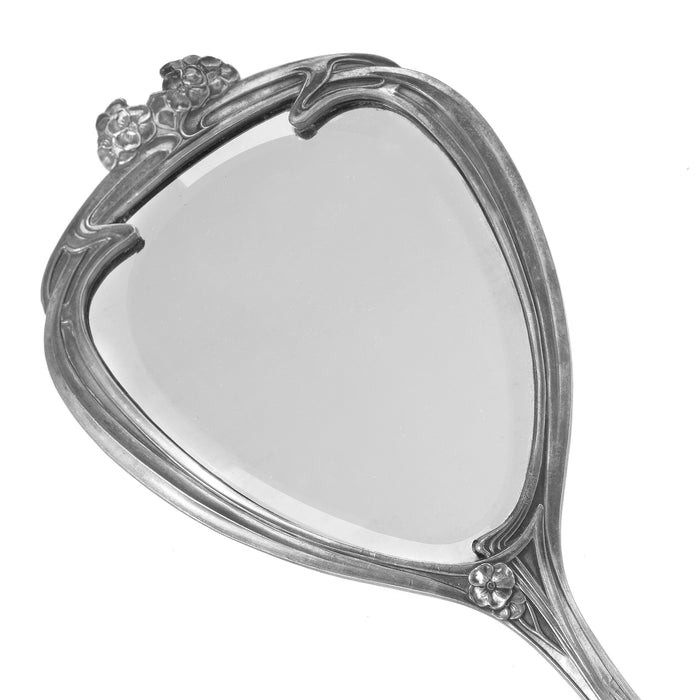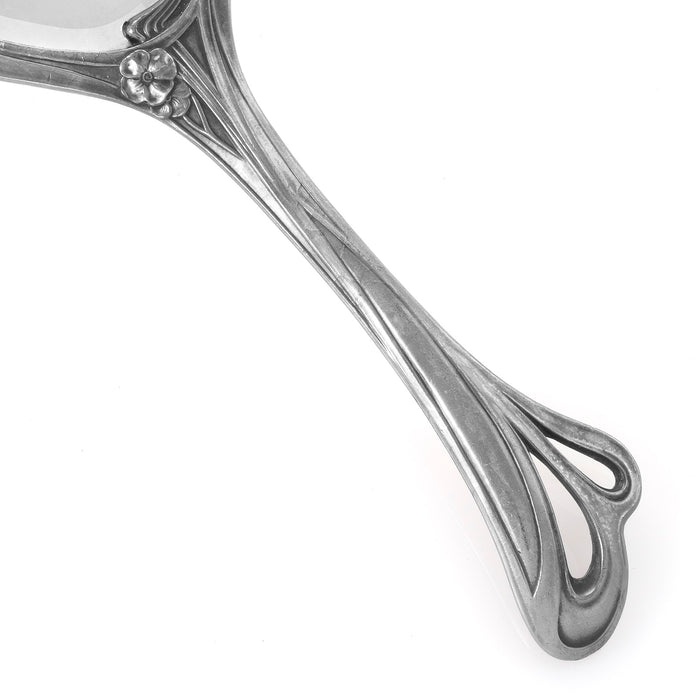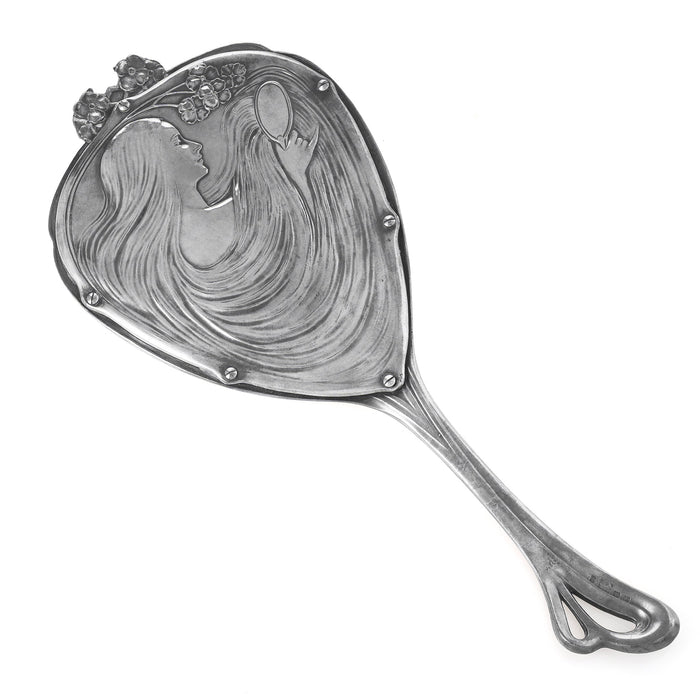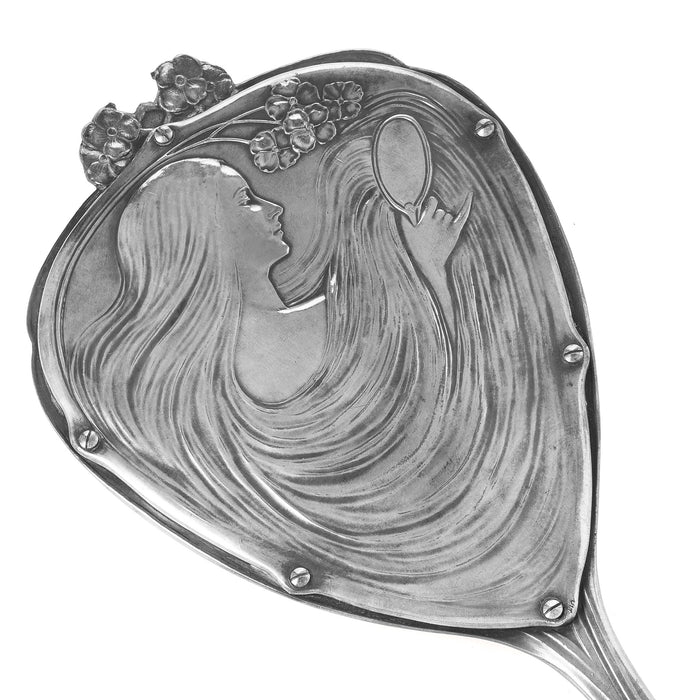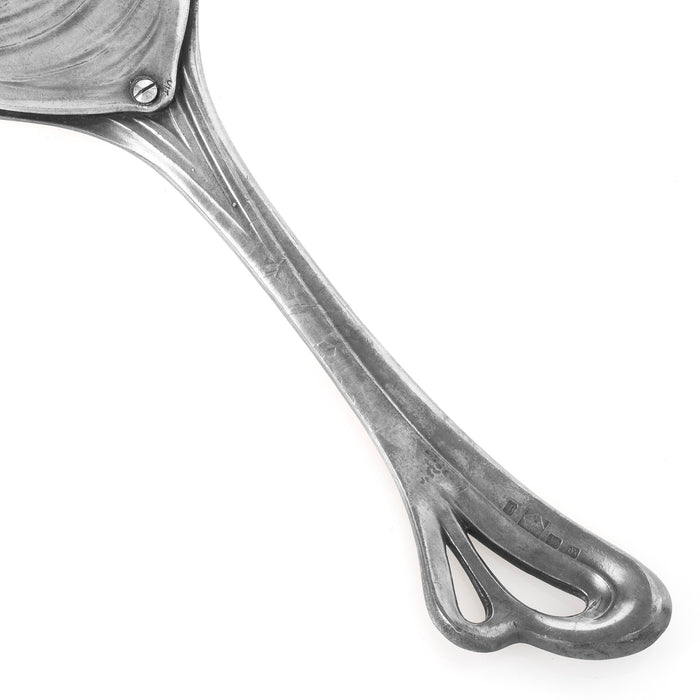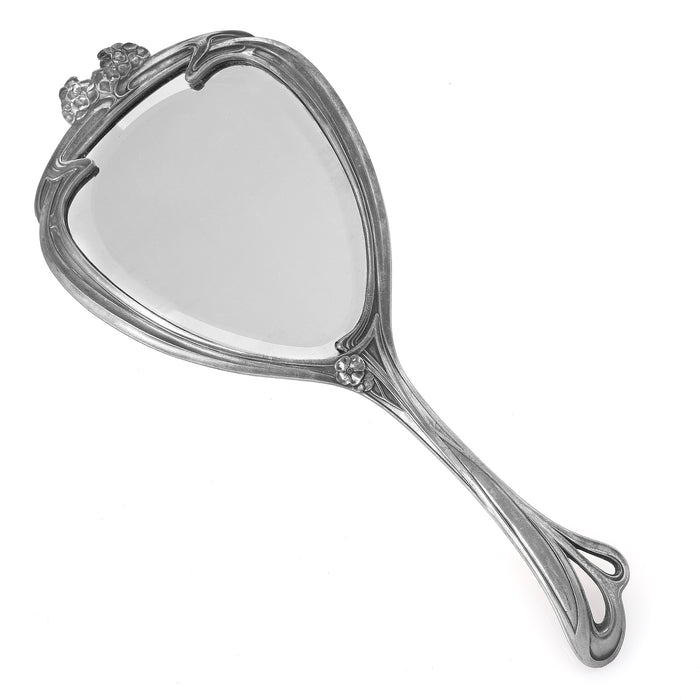
Würtemburgische Machin Fabrik Silver Plated Handheld Mirror
$1,950
This Jugendstil figural hand mirror provides an Art Nouveau take on the "Lady at her Toilette" theme of sixteenth century painting. From Giovanni Bellini to Titian, a woman combing her hair has been interpreted as an allegory of Beauty— flaunting herself at the same time as she grieves her short-lived existence, a form of eroticism tinged with moralism. The Lady at her Toilette theme was revived by the English Pre-Raphaelites (1848-1900) usually pairing beautiful woman combing their hair with flowers. Each included flower had a specific meaning in Victorian England that would denote a moral to their informed viewers. The dogwood was a symbol for purity and virginity. As long uncoiffed hair connoted a woman's unmarried status, the pairing of the female figure and the dogwood is fitting.
- Product Details
- Curator's Notes
Item #: YS-20973
Artist: Würtemburgische Machin Fabrik
Country: Germany
Circa: 1906
Dimensions: 12" height, 5" width, 0.5" depth
Materials: Silver Plated Pewter
Signed: B - Running Ostrich WMF G - I/O - OX
Literature: Württembergische Metallwarenfabrik Graham Dry and Antique Collectors' Club. 1988. Art Nouveau Domestic Metalwork from Württembergische Metallwarenfabrik : The English Catalogue 1906. Woodbridge Suffolk: Antiques Collectors' Club. Page 291 No. 31
In the Victorian era, dogwood flowers came to symbolize deep affection, as it was common for a bachelor to offer a sprig of dogwood blossoms to a woman he desired. If the woman returned the flowers to him, it meant she was interested in having him propose marriage to her. If she did not return the flowers, it meant only that she liked him back.

